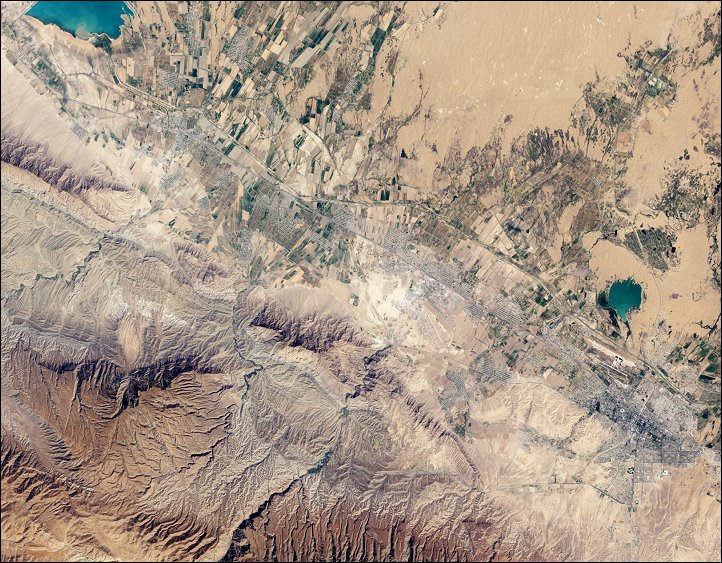| Earth from Space is a free eBook describing our planet from a satellite's perspective. Fore more information, please read the About pages. |

|

Home  Asia Asia  Turkmenistan Turkmenistan  Ashgabat Ashgabat |
|






|
|
AshgabatPosition of center of photo (Lat/Long): [37.933/58.366] |
|
  Not far from the Iranian border, Turkmenistan’s capital city, Ashgabat, sits between the Karakum Desert - a massive sand sea that covers most of the country - in the northeast, and the rugged Kopet Dag Mountains in the southwest. Ashgabat (also known as Ashkhabad) is a relatively young city, having grown out of a village established in the nineteenth century. Ruled by different nations and given different names over the years, the city reverted to its original name in 1992, under the direction of the newly independent government of Turkmenistan. Not far from the Iranian border, Turkmenistan’s capital city, Ashgabat, sits between the Karakum Desert - a massive sand sea that covers most of the country - in the northeast, and the rugged Kopet Dag Mountains in the southwest. Ashgabat (also known as Ashkhabad) is a relatively young city, having grown out of a village established in the nineteenth century. Ruled by different nations and given different names over the years, the city reverted to its original name in 1992, under the direction of the newly independent government of Turkmenistan.
The Enhanced Thematic Mapper Plus on NASA’s Landat 7 satellite captured this image of Ashgabat on September 11, 2001. At the right of this true-color image, the Kurtlinskoye Reservoir glows like a bright blue-green jewel. Elsewhere, however, the arid landscape appears as a patchwork of earth tones, from deep brown to pale beige. Urbanized areas follow a generally diagonal line from the northwest to the southeast, and cityscape appears especially concentrated southeast of the reservoir. Along the city’s margins, cultivated fields appear as irregular rectangles, alternating between deep green and brown. In the northeast, the meandering patches of deep brown-green show where natural vegetation has concentrated along waterways. Ashgabat typically experiences hot, dry summers, and short, mild winters, with most of the area’s sparse precipitation occurring in March and April. Ashgabat endured a devastating earthquake in the mid-twentieth century. A 7.3-magnitude quake collapsed buildings in and around the city in 1948, and death toll estimates ranged from 10,000 to 110,000, according to the U.S. Geological Survey. |
| Source of material: NASA |
Further information: WikiPedia article on Ashgabat
Last Update: 2011-03-30

